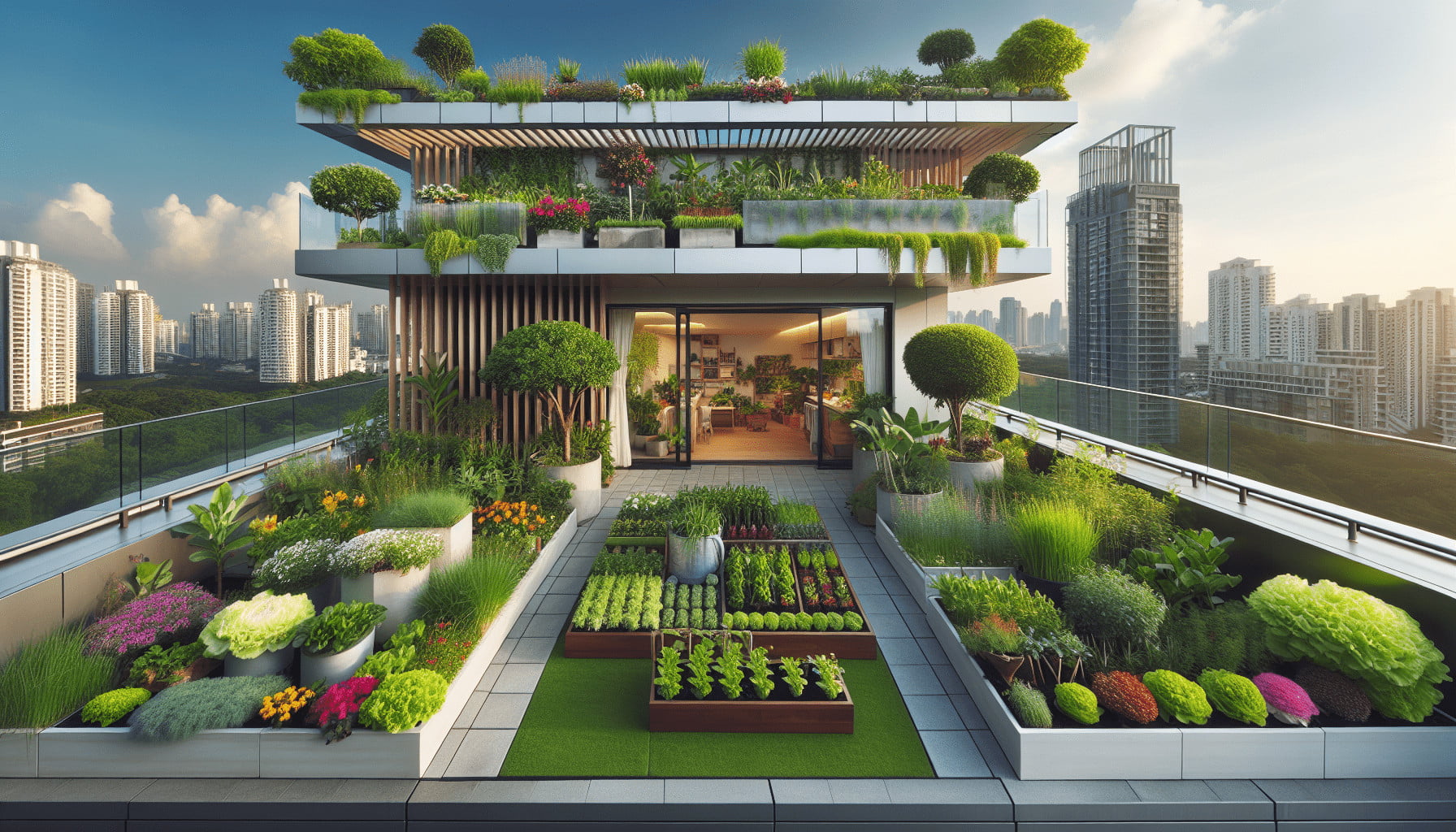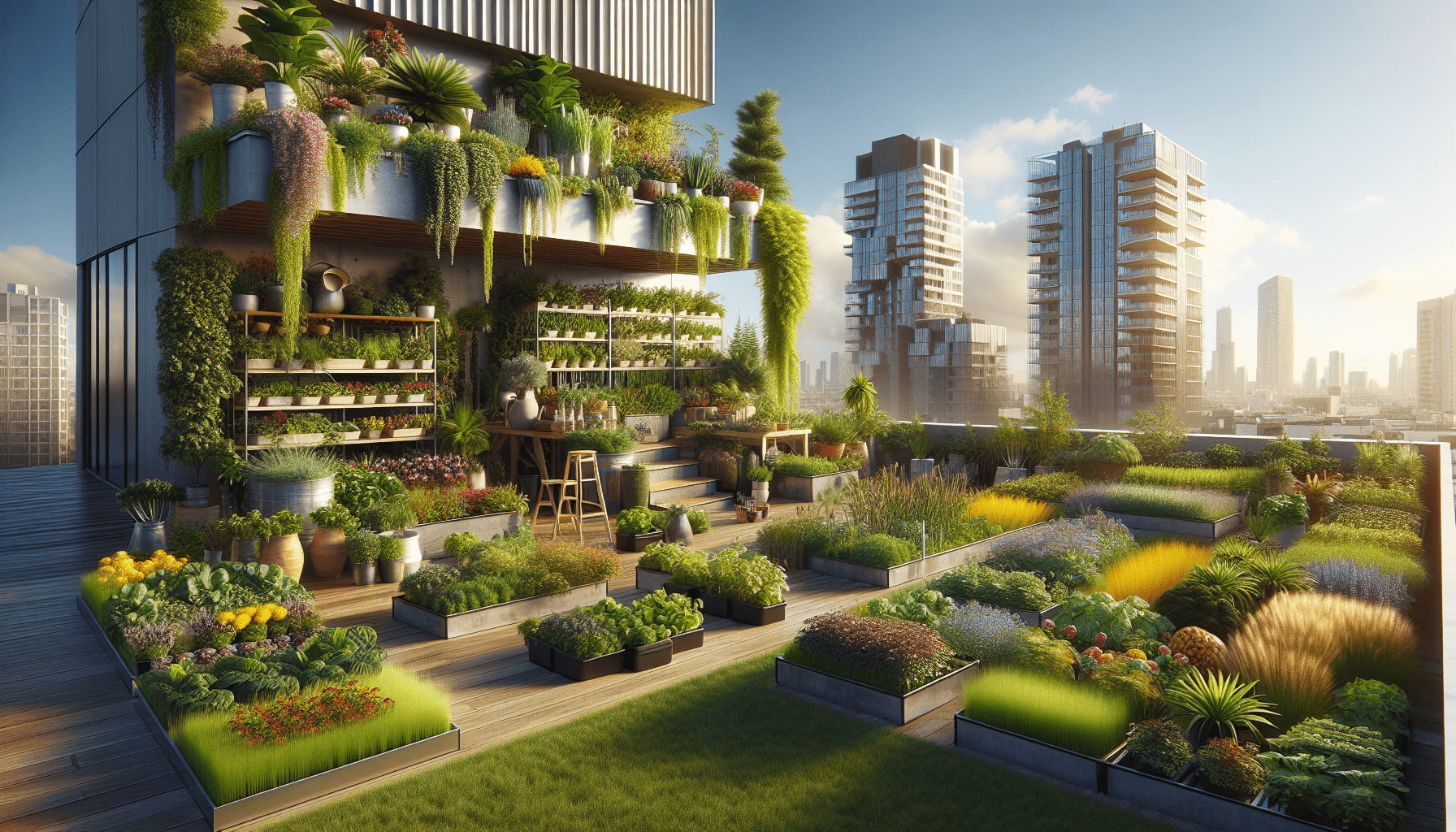Getting into rooftop gardening can be incredibly rewarding, but it comes with its own unique set of challenges. In “10 Common Mistakes to Avoid in Rooftop Gardening,” you’ll discover essential tips to help you succeed in transforming your rooftop into a flourishing garden while sidestepping the pitfalls that many new gardeners face. Whether it’s understanding the importance of weight limits, choosing the right plants, or ensuring proper watering techniques, this guide provides practical advice to help you cultivate a thriving rooftop oasis. Have you ever thought about turning your rooftop into a lush garden oasis? You’re not alone! Rooftop gardening has gained popularity as more people look for ways to green up their urban environments. But with this growing trend come some common pitfalls that can hamper your gardening success. Let’s dive into the “10 Common Mistakes to Avoid in Rooftop Gardening” to help you create your perfect rooftop retreat.
Mistake #1: Ignoring Structural Limitations
Know Your Rooftop’s Weight Capacity
The first thing you need to consider is the weight-bearing capacity of your rooftop. Most rooftops are designed to support a certain amount of weight, including the roofing material, but additional loads from soil, plants, and containers can push it beyond its limit.
How to Avoid:
- Consult with a structural engineer.
- Obtain an assessment of the load your rooftop can handle.
- Use lightweight soil and containers to minimize extra weight.
Waterproofing Essentials
Water can cause severe structural damage over time if your rooftop is not adequately waterproofed. This includes water seeping into cracks and causing leaks, which can weaken the roof and lead to costly repairs.
How to Avoid:
- Ensure your rooftop has a high-quality waterproof membrane.
- Regularly check for signs of leaks or water damage.
- Install proper drainage systems to manage excess water.
Mistake #2: Poor Planning and Layout Design
Plan Before You Plant
Before you start placing containers and filling them with soil, take some time to plan your layout. A well-thought-out design not only looks aesthetically pleasing but also ensures that plants get the light and space they need.
How to Avoid:
- Make a sketch of your garden layout.
- Consider plant sizes and growth habits.
- Decide on paths and accessible areas.
Consider Sun and Shade Patterns
Not all plants need the same amount of sunlight, and rooftops can have variable light conditions throughout the day. Knowing your rooftop’s sun and shade patterns will help you choose the right plants for the right spots.
How to Avoid:
- Observe your rooftop at different times of the day.
- Note areas that receive full sun, partial sun, and complete shade.
- Select plants based on these light conditions.

Mistake #3: Using Regular Garden Soil
Lightweight Soil Mixes Are Essential
Rooftop gardens require special soil mixes that are lighter than regular garden soil. Using heavy soil can strain your structure and hinder plant growth by becoming compacted over time.
How to Avoid:
- Opt for lightweight potting mixes.
- Look for mixes labeled for container or rooftop use.
- Incorporate organic matter to retain moisture and nutrients.
Soil Drainage
Proper drainage is crucial in preventing waterlogged roots, which can lead to root rot and ultimately kill your plants.
How to Avoid:
- Use containers with drainage holes.
- Add a layer of gravel or small stones at the bottom of containers.
- Use well-draining soil mixes.
Mistake #4: Inadequate Watering Practices
Overwatering vs. Underwatering
Finding the right balance can be tricky. Overwatering can cause root rot, while underwatering can stress your plants and limit their growth.
How to Avoid:
- Invest in a good irrigation system like drip irrigation.
- Use moisture meters to check soil moisture levels.
- Water in the early morning or late afternoon to reduce evaporation.
Quality of Water
If you live in an area with poor-quality tap water, it may affect your plants negatively.
How to Avoid:
- Use rainwater or filtered water for irrigation.
- Store rainwater using barrels.

Mistake #5: Ignoring Microclimates
Recognize Microclimates on Your Rooftop
Microclimates are small areas with different climate conditions than the surrounding area. Ignoring these can result in poorly thriving plants.
How to Avoid:
- Identify microclimates such as windy corners or areas near heat-absorbent surfaces.
- Choose plants that suit these specific conditions.
Wind Protection
Rooftops are often more exposed to wind than ground gardens, which can dry out plants and even physically damage them.
How to Avoid:
- Install windbreaks such as lattice screens or plant taller, sturdier plants as wind buffers.
- Select wind-resistant plants.
Mistake #6: Not Accounting for Plant Growth
Space for Growth
Plants need space to grow both above and below ground. Crowded containers can lead to competition for nutrients, water, and light, resulting in poor plant health.
How to Avoid:
- Plant according to the mature size of each plant.
- Thin out seedlings if they are too crowded.
- Regularly prune and maintain plants to manage their size.
Root Bound Plants
When plants outgrow their containers, their roots can become tangled and matted, leading to reduced growth.
How to Avoid:
- Repot plants as they grow.
- Choose appropriately sized containers.
- Split and repot root-bound plants.
Mistake #7: Overlooking Seasonal Changes
Seasonal Plant Selection
Not all plants can withstand year-round conditions. Selecting plants that thrive in the current season will keep your garden consistently vibrant.
How to Avoid:
- Rotate plants according to the seasons.
- Use containers that allow for easy moving.
- Research plant hardiness and align your choices accordingly.
Seasonal Maintenance
Seasonal changes mean different maintenance needs. In fall, you may need to prep plants for colder weather, while summer might call for extra watering to combat heat stress.
How to Avoid:
- Regularly update your garden maintenance calendar.
- Adjust care routines seasonally.
- Apply mulch in winter to protect plant roots.
Mistake #8: Neglecting Pest Management
Early Pest Detection
Ignoring pests can result in significant damage before you even notice there’s a problem. Early detection and management are key.
How to Avoid:
- Inspect plants regularly for signs of pests.
- Learn to identify common rooftop garden pests.
- Use organic pesticides and beneficial insects to control pest populations.
Integrated Pest Management (IPM)
Adopting an IPM approach can help you manage pests in a sustainable way.
How to Avoid:
- Combine biological, physical, and chemical methods.
- Rotate crops to prevent pest buildup.
- Maintain plant health to make them more resistant to pests.
Mistake #9: Limiting Plant Variety
Embrace Plant Diversity
A variety of plants can increase the resilience of your garden and make it more visually appealing. Relying too much on one type can leave you vulnerable to pests and diseases.
How to Avoid:
- Mix perennials, annuals, herbs, and vegetables.
- Include a variety of colors and textures.
- Rotate different plants through the seasons.
Benefits of Diversity
Diverse plantings can also attract beneficial insects and improve overall garden health.
How to Avoid:
- Research companion planting techniques.
- Incorporate native plants that adapt well to local conditions.
- Experiment with different plant combinations.
Mistake #10: Inadequate Sustainability Practices
Use of Non-sustainable Materials
Using non-sustainable or non-renewable materials for your garden can have long-term negative impacts on the environment.
How to Avoid:
- Choose eco-friendly and recyclable containers.
- Use organic fertilizers and soil amendments.
- Incorporate renewable resources like rainwater collection systems.
Energy Efficiency
Rooftop gardens can contribute to cooling effects and energy savings for your building, but neglecting this aspect means missing out on significant benefits.
How to Avoid:
- Plant strategically to provide shade.
- Select plants that can help regulate temperature.
- Utilize reflective materials to reduce heat absorption.
Conclusion
Rooftop gardening offers a unique and rewarding way to enjoy urban horticulture, but it does come with its own set of challenges. Avoiding these common mistakes can set you on the path to creating a thriving, beautiful rooftop garden that not only enhances your living space but also contributes to a greener city. Happy gardening!
